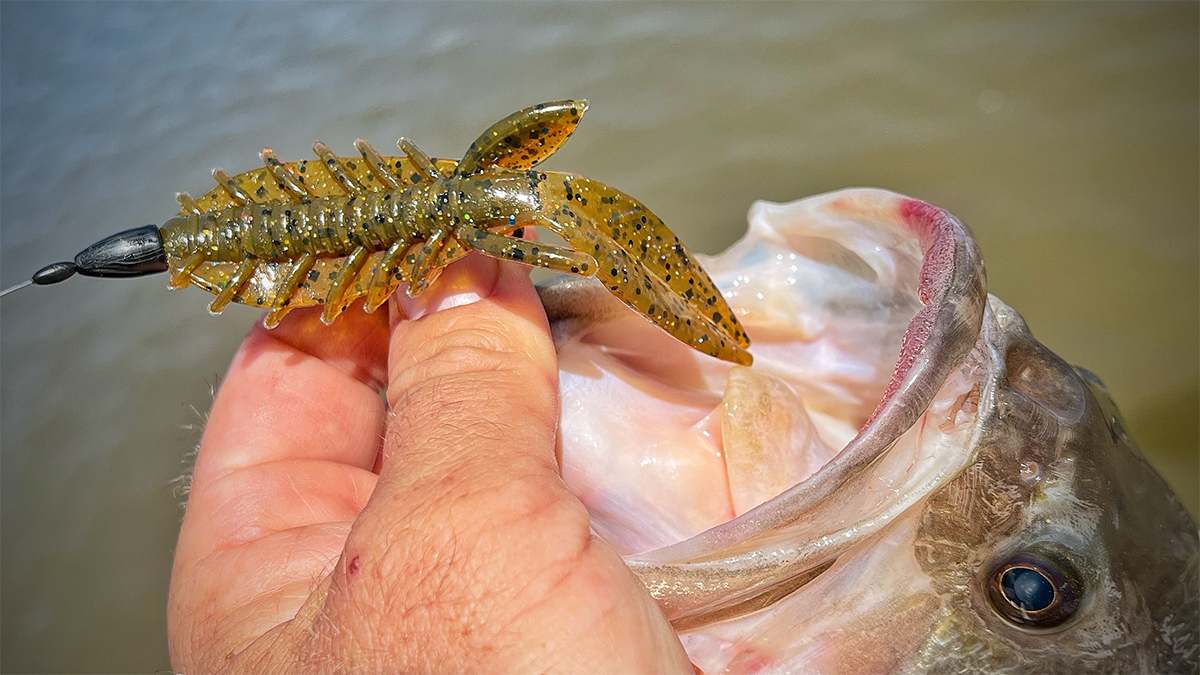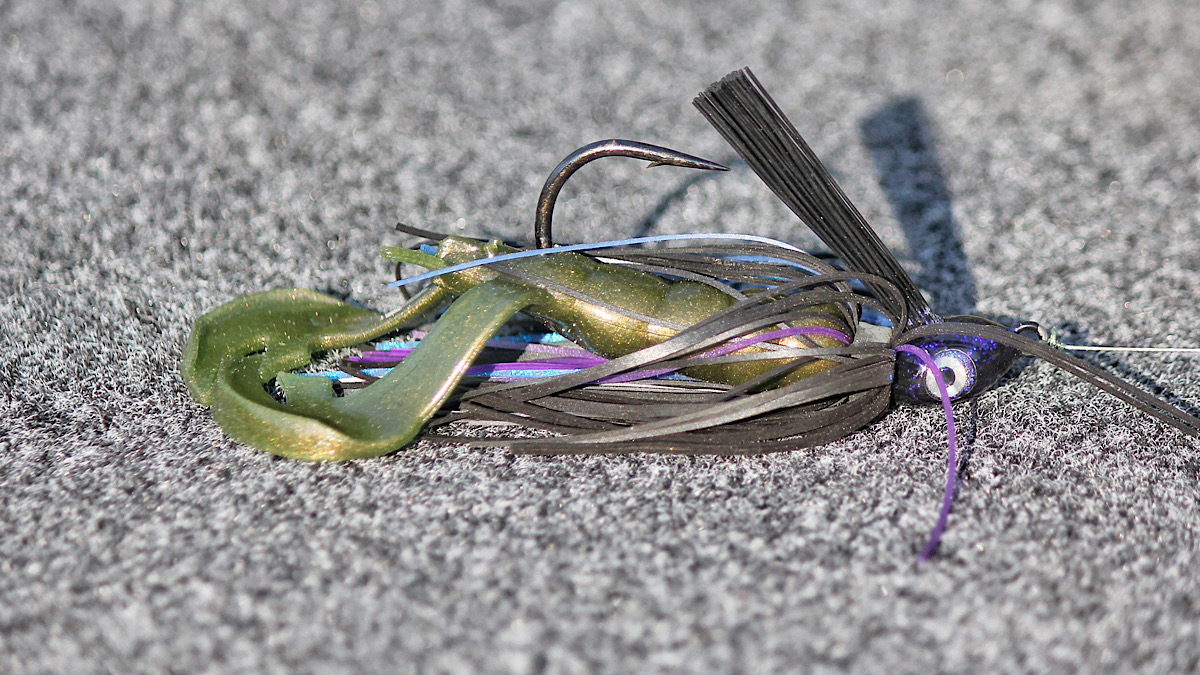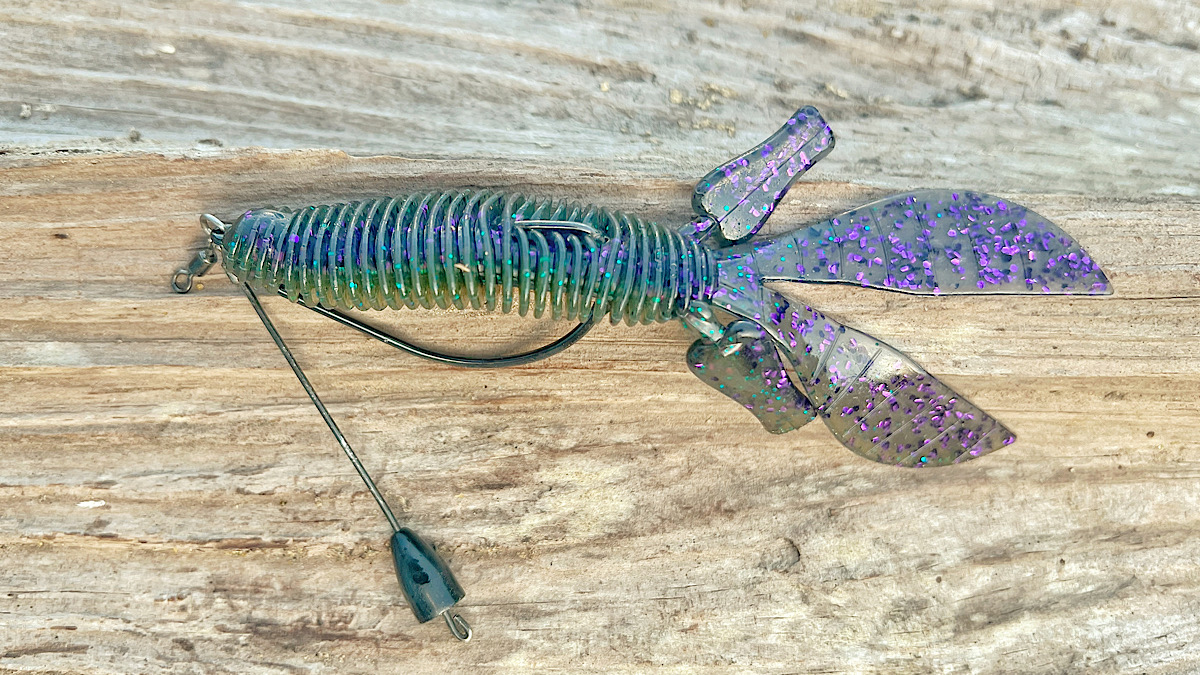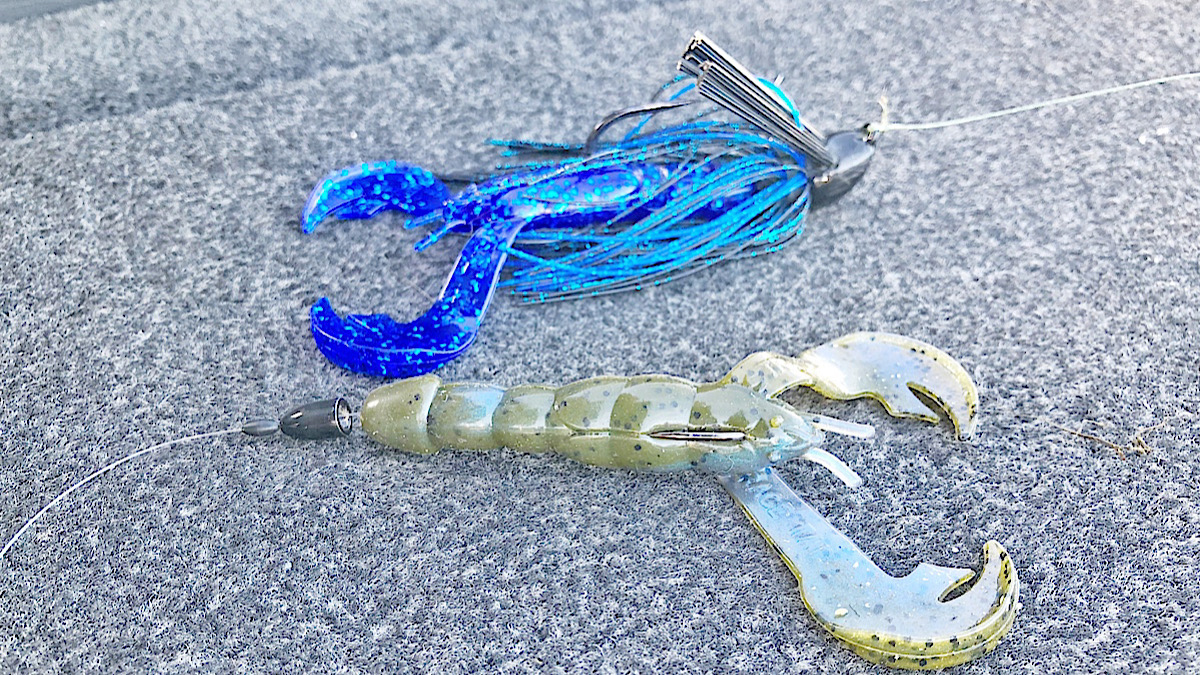Pitching shallow cover is a great way to catch bass any time of the year. Though a large part of the bass population does move to deeper water on many fisheries certain times of the year, there are almost always some fish shallow on any given body of water. And these bass typically like to stick close to cover.
Today we’re going to look at some of the ins and outs of three different ways to pitch shallow cover: Texas-rigged soft plastics, jigs and Tokyo rigs. To some degree, all three of these could be used interchangeably but there are certain situations where one out performs the other two.
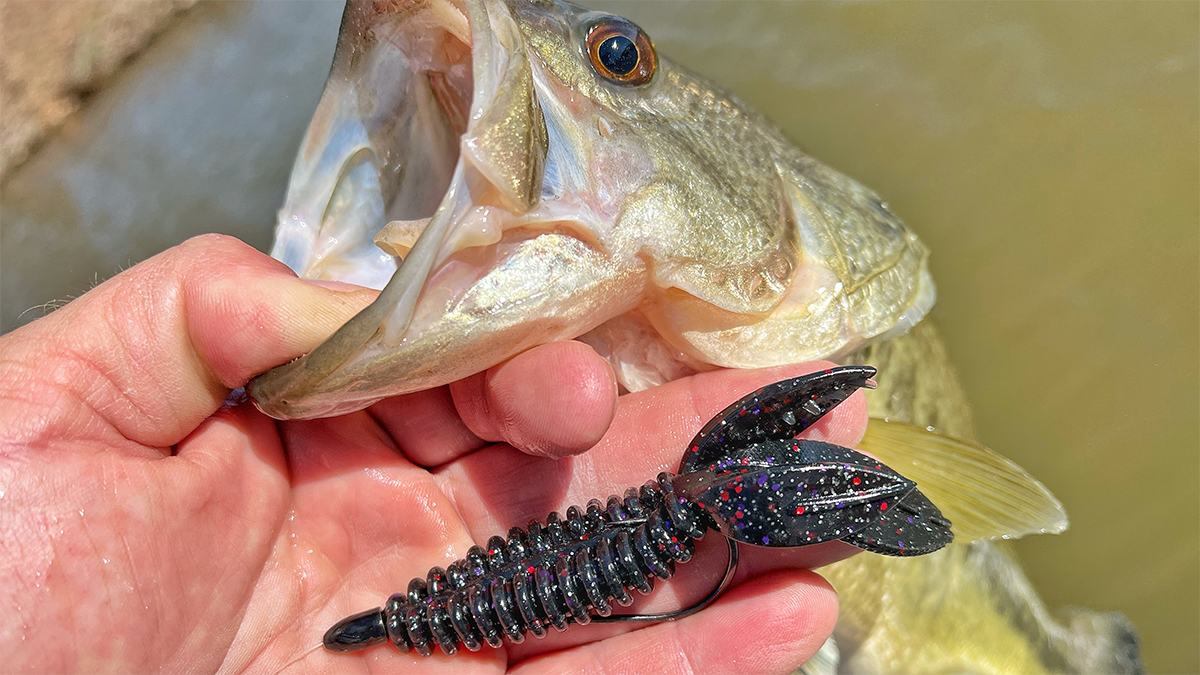
Texas rig
For starters, with extremely dense cover like matted vegetation or other matted debris that’s floating on the surface, a Texas-rigged soft plastic with a large punch weight is the way to go. The key with this style of fishing, otherwise known as punching, is getting a bait through the mat and doing so as efficiently as possible. A Texas-rigged soft plastic has the cleanest profile of these three bait categories and slips through a mat the easiest.
But you can also fish a lighter weight Texas rig shallow around all sorts of cover. Pitching a Texas-rigged creature bait with a 3/8-ounce weight around stumps, laydowns, docks and submerged vegetation is a great way to trigger strikes when the bass are a little more finicky up shallow. It’s easier to pitch this lighter weight around with a streamlined bait without making a big splash like you might with a heavier, bulkier jig.
Lots of creature baits like this have a gliding fall to them versus the more vertical fall of a jig or Tokyo rig. This makes them particularly appealing to pitch around dock posts and stumps. The bait kind of glides by this type of cover, imitating a bluegill or bream swimming more horizontally. The lighter the weight you use for this and the more slack you’re able to have in your line, the more of this look you’ll get.
Jig
Pitching a jig around shallow cover is again a great way to catch fish most any time of the year. To me though, a jig really sets itself apart from a Tokyo rig and a Texas rig in the overall look and the way you can slow down the rate of fall. The skirt of a jig adds bulk to the bait and slows the fall of the bait down versus the same weight in one of these other two bait categories. Using a craw-style trailer, you can even further bulk up the overall profile of a jig, as well as slow its fall even more.
When fish are aggressive, pitching a 1/2- to 3/4-ounce jig around shallow cover gives the bass an easy and large target to annihilate. This too works well with vertical cover like the Texas rig. But it’s much more effective than the Texas rig or Tokyo rig when pitching and then swimming the bait back through cover that’s more horizontal, like a laydown or submerged grass line.
Pithing a jig like this to shallow cover and then letting it fall down into the cover and hopping or swimming it back to the boat creates a great small baitfish or crawfish imitation. Though you could swim something like a Rage Craw on a Texas rig or maybe even a Tokyo rig, a jig is really the best of these three by far for this more horizontal approach.
Tokyo rig
A Tokyo rig is another great bait to pitch up shallow. What sets this presentation apart the most is its ability to be fished slow and even stationary, while still having a lot of action. This makes it a fantastic bait to pitch shallow when bass are either bedding or just particularly finicky and slow to bite, like in the heat of the summer or the bitter cold of winter.
The drop arm of the Tokyo rig puts a little distance between the weight and the soft plastic. This allows the actual bait to kind of drift around a bit, without actually moving the weight. This subtle bit of action is at times needed to get fish to commit to the bait if they’re not super aggressive. This is particularly effective if there’s a little bit of current present, as it will wash the bait around.
You can use a lot of the same soft plastics on both the Texas rig and the Tokyo rig. Worms, creature baits, tubes and craws are all good choices for both. The biggest difference between the two again is that separation of the weight from the bait, which makes for an entirely different presentation.
Final thoughts
If you’re looking to catch fish shallow, try pitching a Texas rig, jig or Tokyo rig around cover. There are subtle differences that make each bait better suited for certain situations. If the fish are aggressive, if you’re wanting to fish cover that’s more horizontal or if you’re really looking for a bulky, slow-falling bait, a jig gives you the best tool to accomplish these things.
But if you’re looking to slow down and pick cover apart, a Texas rig or Tokyo rig may be the better bet. Sometimes, the gliding, slow fall of a Texas-rigged creature bait is capable of drawing strikes when nothing else will. Then other times, a slow fished Tokyo rig is able to put a bait in a fish’s face and keep it there and it’s something they just can’t resist. Sometimes, you’ll just have to try all three and let the fish tell you what works best. But you can almost always get bit on one of these three presentations shallow.


